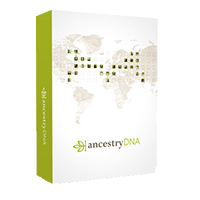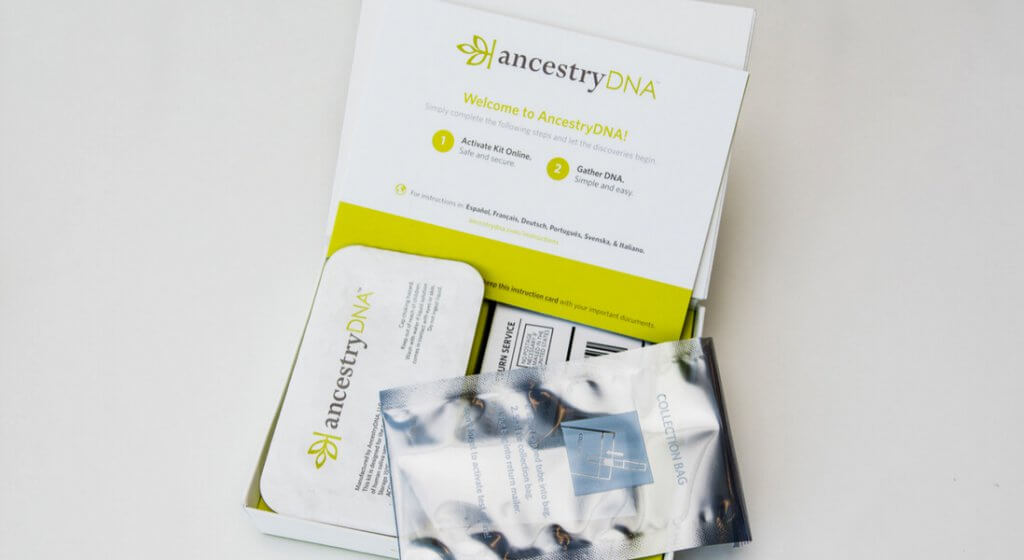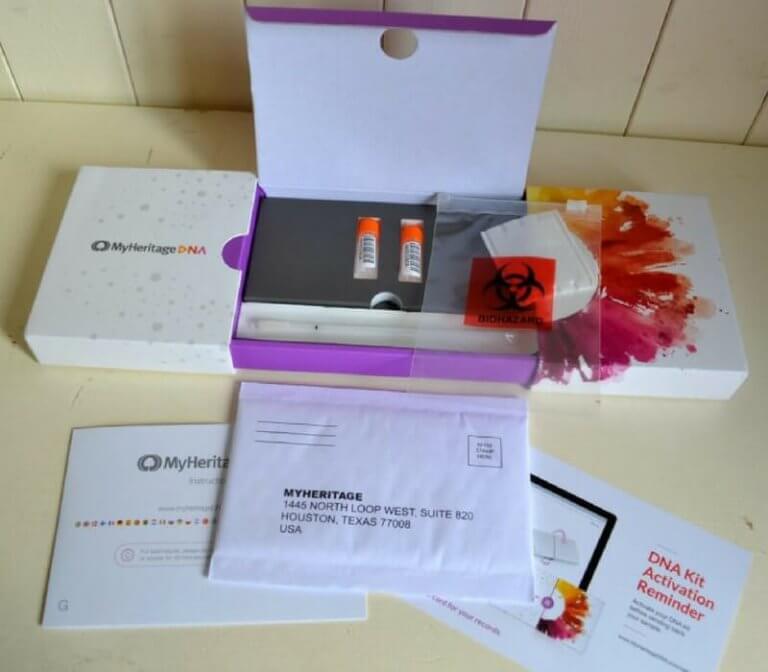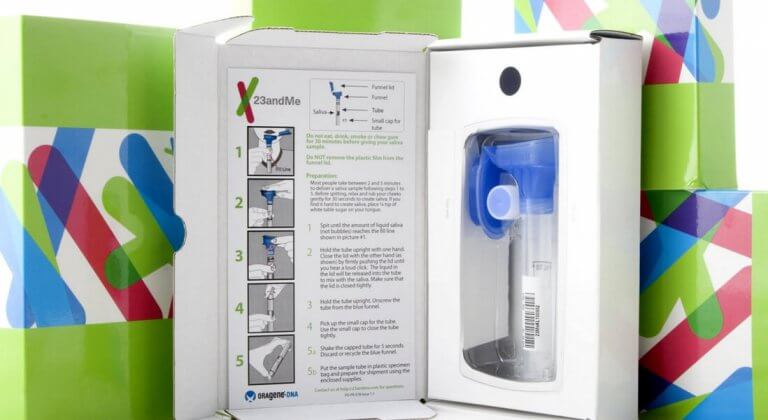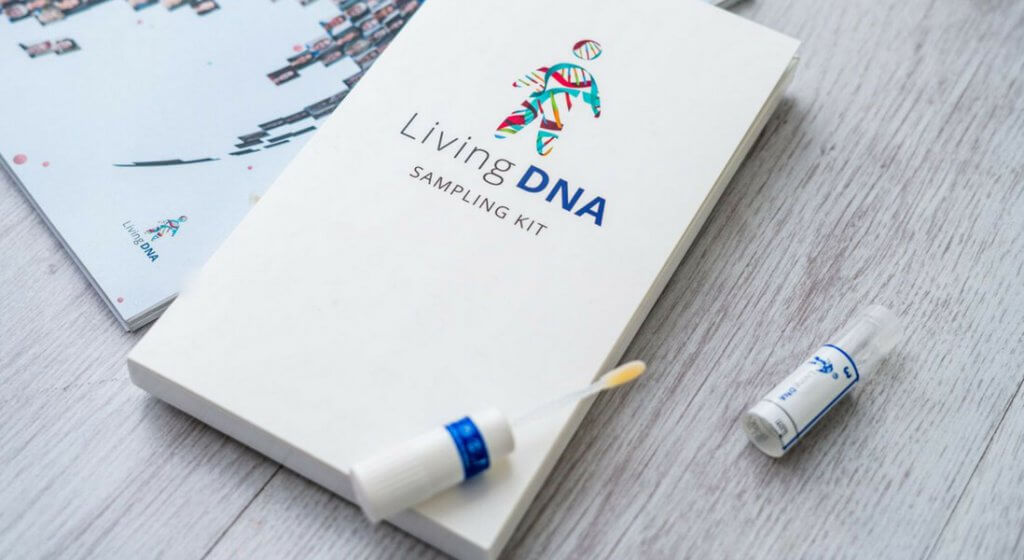BEST DNA TEST
FOR ANCESTRY 2019
BOTTOM LINE
If you want an affordable way to test your DNA and access to one of the largest genetic databases, this is the test for you. The site lets you share your information on other sites and connect to users you matched with online.
PROS
As one of the most affordable DNA test kits on the market, this kit will fit any budget. You can actually import your information to other sites and use the Ancestry database to connect with other users.
CONS
This test doesn’t provide you with any medical information and may not give you all the results that you want. Some users also found that the company had a slow response time.
BOTTOM LINE
With nearly one million users already registered in its database and more coming, FamilyTree DNA can help you find and track family members around the world. Though it doesn’t store user data for as long as other companies do, it does let you connect with people who had similar results.
PROS
FamilyTree DNA only requires a small swab of your cheek to get the results that you want. The company runs multiple tests on a single sample and allows you to access your information online and view others who match your results.
CONS
This test limits your results and will only give you geographical data relating to 24 regions. Some people didn’t like how long the process took and that the company only stores data for 25 years.
BOTTOM LINE
An affordable and easy way to test your DNA is with the MyHeritage DNA kit, which uses a cheek swab rather than a saliva sample. You can connect with more than one million users from around the world and view geographical results from more than 40 regions.
PROS
With more than 1.4 million users already tested and registered online, this company helps you find people you share genes with after taking the test. Once you send in your sample, you can contact matches via email and on the site.
CONS
MyHeritage DNA limits your geographical results to only 42 regions around the world and does not give you any health information. You may not like how long it takes to get your results back either.
BOTTOM LINE
One of the only DNA test kits on the market that gives you both genetic and health information is the 23andMe kit, though you must pay extra for health testing. The kit provides info on more than 100 regions and has a database with more than one million registered users.
PROS
23andMe runs multiple DNA tests on each sample received and will save your results indefinitely. You can choose between a basic kit that just tests your DNA or a more detailed kit that tests for chromosome markers and other health information.
CONS
If you want to view your health data, you must pay the company an additional fee. Even if you pay extra though, you may find that 23andMe gives you limited health information.
BOTTOM LINE
For basic testing at a low price, you can’t go wrong with Living DNA, which tests your genes for info relating to your mother and father. It will automatically update your online account with the information it finds in around 12 weeks.
PROS
Living DNA tests your sample for genetic material on both your mother’s side and your father’s side. Once you create an account and submit your sample, the site will automatically update your account with the genetic info it finds.
CONS
Many users wish that this company gave them the option to upload their raw data to other sites. You may not like that the company doesn’t maintain a database for its users too.
Shopping Guide for the Best DNA Test
Even if you feel 100% confident about your heritage and where your family came from, doing a DNA test can reveal some surprising results. Many people in the United States claim that they have Native American ancestry or that their families came over with the early settlers. The only way you can know for certain where your family came from is with one of the best DNA tests for 2018. The companies that offer these tests maintain a large database that can help you find long-lost family members around the world.
When you take one of these tests and send in your sample, the company will compare your sample to those already in their databases. You can access all the information found via an account you register with the site. Before we go into how these tests work though, we encourage you to look at the chart and view the top DNA tests for 2018. You can purchase one of these kits online and have it shipped right to your front door. We’ll go over all the things to consider as you look at tests and what each test does and reveals to help you find out more about your heritage.
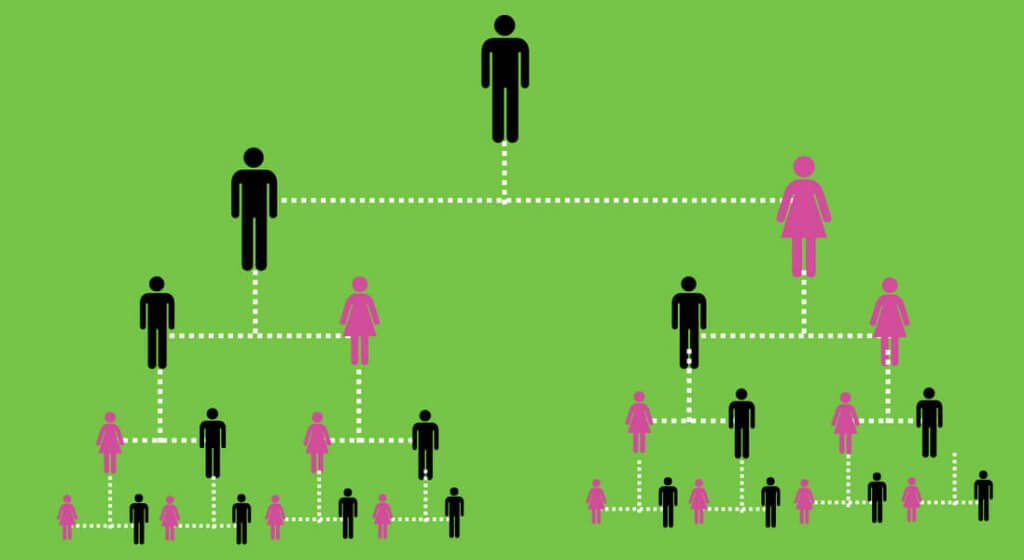
Selection Criteria
The idea of testing your DNA at home sounded like something from a sci-fi flick just a few years ago. Companies now let you take a cheek swab or submit a saliva sample and get results back in just a few months or less. Though there are now dozens of these companies operating in the world today, we wanted to find and rank the top five testing kits. Not only did we look at what consumers said about their experiences with each kit, but we also looked at what the companies said about their products. We considered criteria such as:
- How long it took to get results back
- The ease of use of the kit
- Information listed in the results
- Size of database and number of registered users
We also looked at the overall satisfaction reported by users and how happy they were with the results found. While some companies allow you to import that raw data from your kit to other sites, some companies will not let you share that info. As you look at the top five DNA tests for 2018, you’ll find one suitable for each member of your family.

What is a Home DNA Test Kit?
Before looking at our shopping guide and all the other information we provided, you may want to get an idea of what a home DNA test kit is and what comes included inside the kit. These kits come from a variety of different companies that will actually test your saliva and find DNA. You have the option of having your maternal or your paternal DNA tested, but some kits now come from companies that will test both. When you receive the kit, you will find detailed instructions inside that explain how to take the test and submit your sample. The kit should also come with either a swab that you run along the inside of your cheek or a small container that you spit into.
Home kits are more accurate than you might think too. The company you choose to work with will actually compare your results to the databases they created from past samples. You will get information about any familial matches found within that database and any ancestry data discovered. Those ancestry details can tell you exactly where your family immigrated from in the past and where your family line actually started.
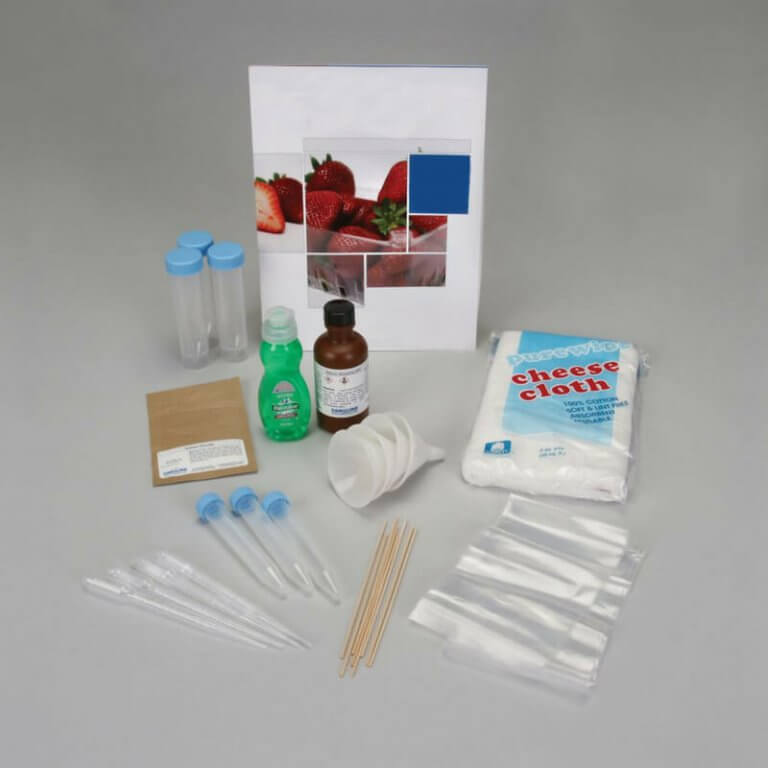
What Comes in Your Test Kit
- Saliva sample container or a cheek saw
- Instructions on completing the test
- A stabilizer, if you opted for a saliva test
- Return packaging
Who is a DNA Test for?
Though you may decide to take a DNA test on a lark or just because you wonder about your heritage, these tests are suitable for many different types of people, including:
- Adopted kids: People of all ages who were adopted as children use DNA tests because they want to find out if they have any living relatives. They may find one or both of their parents or relatives of their parents. DNA tests with a health component can give them information about their genetics and predispositions too.
- Family researchers: Whether you want to create a detailed family history for your parents or a simple tree that shows your ancestors, you can do a DNA test. Your results may go back further than you ever expected and help you trace your family to another continent.
- Secrets: DNA tests are also perfect for those who want to get to the root of family secrets and stories. When you take a test that shows the ethnic background down to an exact percentage, you can put a rest to those tall tales.
- Parents: If you have kids or plan on having kids, you may want to take a DNA test to get an idea of what genes you’ll pass down to your kids. Your results will show the predisposition that you and your kids will have of developing certain medical conditions.
Three Things to Know About DNA Test Kits
- Some kits will not test for all the genealogical groups your family belongs to
- You may need to submit a new sample because of damage or problems with your first
- Some companies charge high fees for access to all related services
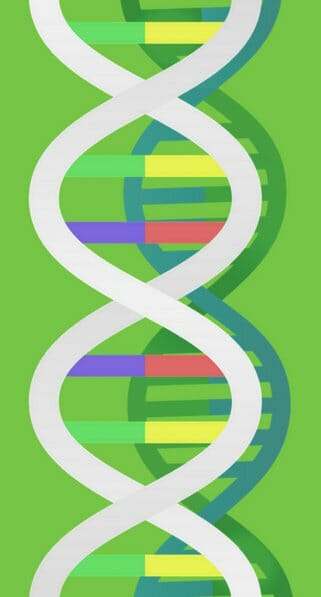
How the Process Works
You probably have a few questions about how these kits work and what you need to do. Those questions might go beyond simply how you take and send in your sample. These kits come with everything that you need, including a container or packaging for your sample and a box with a pre-paid stamp on the front that ensures your sample gets back to the testing facility. The whole process really only takes a few steps.
- Take your sample: Depending on the test kit that you choose, you’ll either use a swab on your cheek or a container to take a saliva sample.
- Add the sample: Follow the directions in the kit to ensure that you used the right steps when taking your sample. You can then insert the sample in the packaging provided and place it inside the kit.
- Use the label: Some kits come with a label already added to the front of the return box, but others require that you peel the label off a paper in the kit and add it to the front of the box. Some companies require that you pay your own postage to send in your sample.
- Create an account: You’ll also need to create an account with the website of the company you chose. Most require that you create a username and password, but others allow you to set a password and use your email address as a username.
- Wait for your results: As soon as the testing company finishes with your results, it will send an email to the address you registered. You can then log in and view all your results.
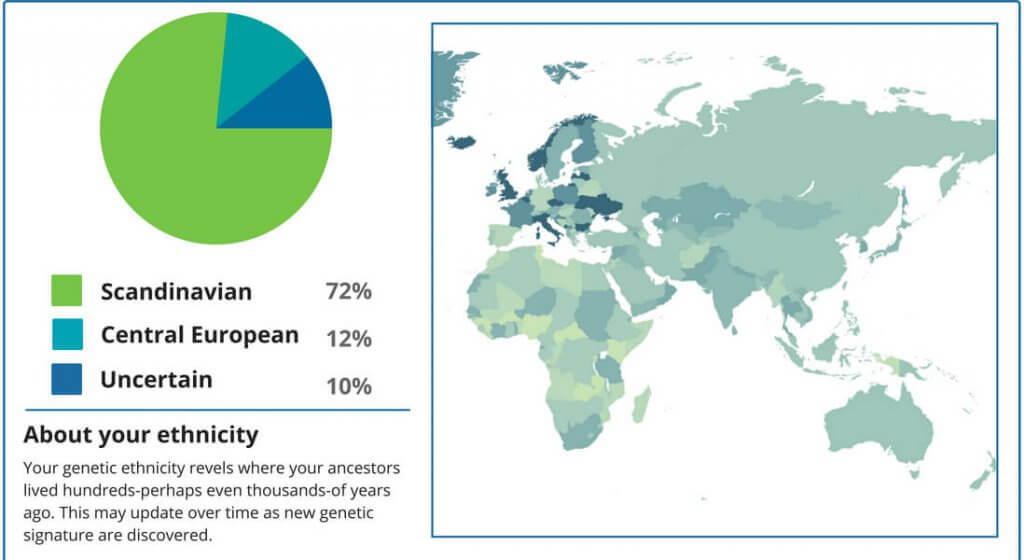
The Waiting Game
The main downside to getting a DNA test done is that you must play the waiting game. While AncestryDNA claims that you will get your results back in as little as six weeks, it also makes it clear that it can take 10 weeks before you hear anything. Many of the other companies that we looked at will take up to 12 weeks or even 14 weeks to process your sample. If you purchased a kit and submitted a sample around the holiday season, you’ll wait even longer for a response. The holiday season, which includes Christmas and Thanksgiving, is quite busy because so many people buy these kits as gifts. Other holidays such as Mother’s Day and Father’s Day can also lead to a longer wait time.
Many companies will send you an email to let you know that your sample arrived. You should get periodic updates about whether your kit is in the testing queue or currently undergoing testing. If you do not hear anything back for six weeks, you should send the company an email. The testing company will contact you if any problems arise too. Those problems can include a sample contaminated by an issue that occurred during shipping or a sample that was too small for testing.
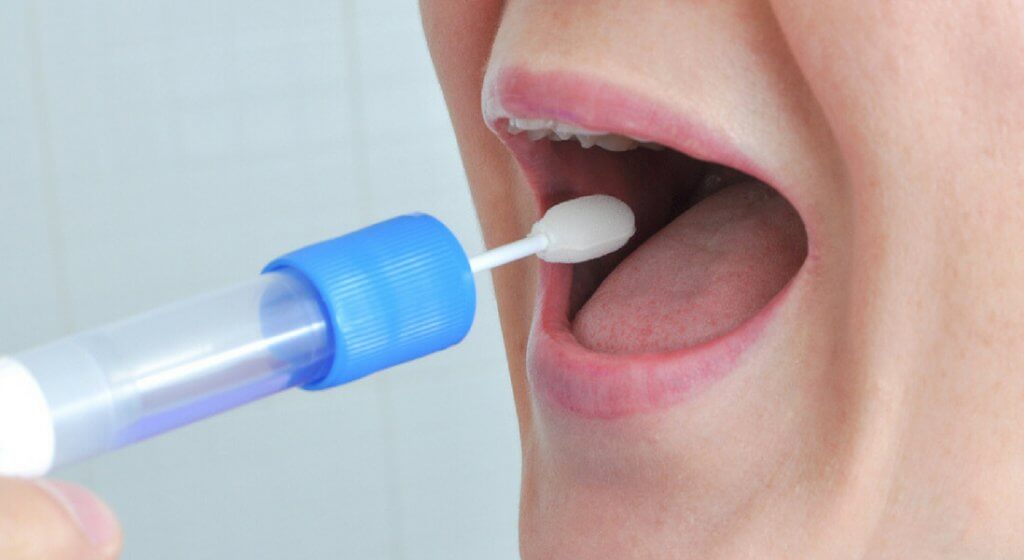
Signs That You Produced a Poor Saliva Sample
When you produce a poor saliva sample, the testing center cannot obtain enough genetic markers to process it. You can look at the following signs to determine if you need to redo your sample.
- You cannot fill the container to the line shown on the sides.
- You see small pieces of phlegm or other debris floating in the liquid.
- The saliva appears white or brown in color.
The Results of Your Test
While you care about shopping for a kit and choosing the best kit, you also care about what that kit actually shows in terms of your results. Most kits will provide you with three basic things:
- Raw information or data
- Ethnicity details
- Contact information
Raw Data
The raw data that you receive comes in a file that you can download to your computer. You can then upload that information to an app or a website that will analyze it and tell you what everything means. This can help you find out if certain ethnic or regional groups are prone to medical problems and whether your ethnicity relates to any specific religious groups. You should keep in mind though that not all testing companies give you raw data. Even those that do may prevent you from importing that data off the site.
Ethnicity Details
Many people do DNA tests because they want to know more about their ethnic backgrounds. Let’s say that your family always swore they came from a remote fishing village in Scotland. With a DNA test, you can find out if you really are Scottish or if there are other ethnic groups in your family line. Most tests will show you all the data in an easy to follow format. It lists the groups you belong to in a list with the largest concentration at the top and the smallest concentration at the bottom. You can view the exact percentage of the DNA connected to each group found in your sample.

Contact Information
Once you complete a DNA home test, you’ll want to find family members around the world. These testing companies give you a few different ways to contact other users based on your privacy settings. Many companies let you list your email on your profile. Those who share DNA with you can prove that a match exists and send a message to your email address. You also have the option of using an online messaging system and only giving out your email address to those you feel comfortable talking to online. AncestryDNA and other companies have community message boards and forums that let you connect with other users too.
Expert Tip
If you don’t want one of these sites to overwhelm you with multiple emails, set up your account with an email address you use specifically for that site. You can log in and check your messages a few times a month without seeing emails every day.
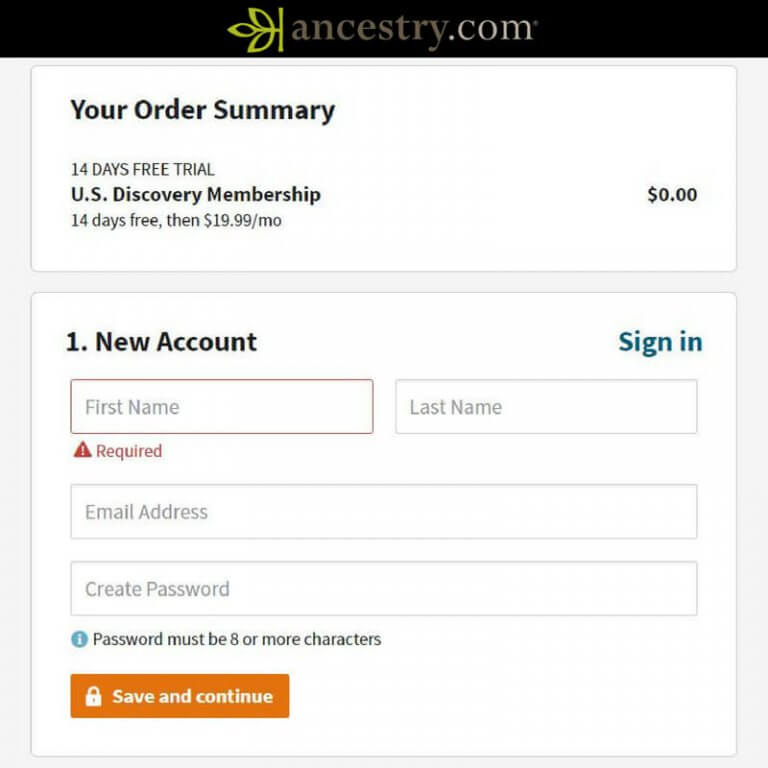
What Can You Find Out From a DNA Test?
- Family members: When you take a test, it will reveal whether anyone in the database shares DNA with you. This can help you find cousins as well as siblings and other familial matches.
- Ethnic background: Many people use home kits because they want to learn where they came from and the ethnic backgrounds or makeups of their families. Most kits show you the type of ethnic background related to your DNA sample and the percentage of each ethnicity that it found in your sample.
- Health and wellness: 23andMe and similar tests will also provide you with health and wellness information. You’ll learn if you are susceptible to certain wellness issues such as irregular sleep patterns and if you have a high risk of developing medical conditions because of your genes. Only a few tests on the market have FDA approval to offer health and wellness info.
- Genealogical information: With a DNA test kit, you can also find genetic information about your family too. Many companies give you the chance to create a family tree based on the info that you find and to add to that tree as more information becomes available.
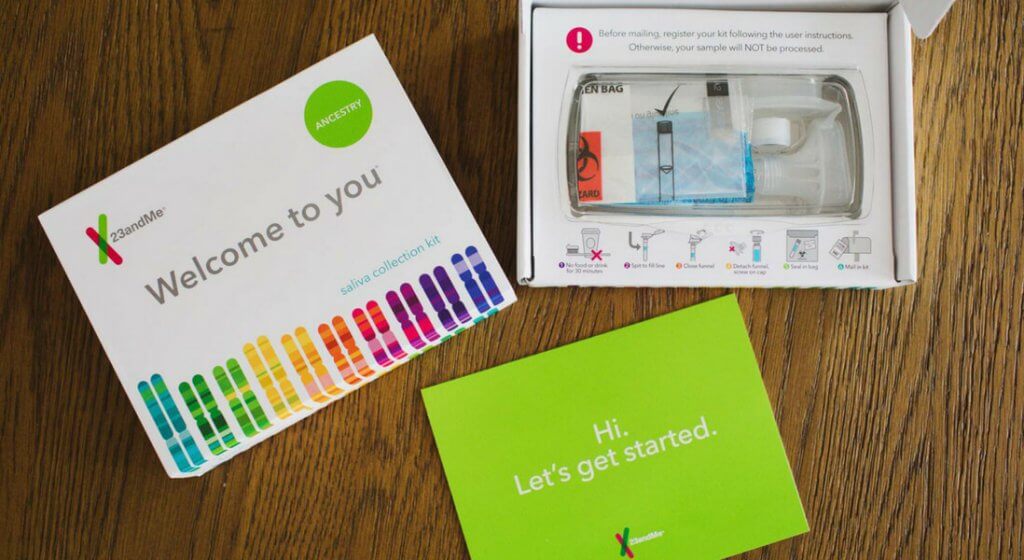
Did you know?
23AndMe originally sold health DNA test kits but changed to genetic testing after the United States Food and Drug Administration required that it pull those tests from the market. The company’s DNA kits became so popular that when it had the chance to sell health services again, it kept its DNA services.
What a Health and Wellness DNA Test Can Tell You
- Genetic risk: These tests can tell you if you have a risk of developing medical conditions based on your genes. 23andMe is the first test of its type that will let you know if you are at risk of developing breast and other types of cancers. It also screens for autoimmune diseases, anemia, dementia and blood clots.
- Carriers: If you have a family history of dementia or heart disease, you already know that you have a risk of suffering from that same disease in the future. Health and wellness screening tests can tell you if you are a carrier for those diseases, which means that you can pass each one down to your children.
- Wellness reports: The wellness reports provided by these tests will let you know if you have a genetic predisposition to gain weight or lose muscle mass and how deeply you sleep at night. 23andMe also checks for alcohol flush reaction, which is a condition that causes the skin to turn bright red when an individual drinks alcohol.
- Trait reports: You will also get reports that tell you more about specific traits, including whether you may suffer from baldness or freckles. The test can even reveal whether you have a predisposition to hate the sound of chewing based on your genes.
What to Do with Your Health Results
Talk to your doctor.
Inform close family members.
Make changes to your lifestyle, including engaging in more exercise and following a diet.
Are There Any Emotional Issues Associated with DNA Tests?
Before you take a home DNA test, you should prepare yourself for any emotional issues that might arise. Many people online discovered that they had siblings they never knew about before. Some found siblings that their parents had before they married, while others discovered that one of their parents had an affair that resulted in the birth of a child. You may uncover other surprising information about your family, including long-lost aunts and uncles who your family shunned for reasons such as being gay or having different religious beliefs. If a specific member of your family tries to talk you out of taking one of these tests, that individual might have something to hide.
It’s important that you talk to your family before submitting a sample. You should let them know that you plan to take the test and give them the chance to share any hidden information upfront. In addition to finding relatives, you may learn that your family’s ethnicity is different from what you thought. Some people claim that they are Native American when they actually have African American blood in their family lines.

Pros of DNA Testing
- Convenient testing: When you opt for a traditional DNA test or a genetic health screening, you usually need to make an appointment and visit a health clinic in your city. Home kits offer a more convenient way to get tested. You can submit your sample from home and view the results from the comfort of your living room.
- Launching point: If you do a DNA test because you want to research your family tree, the results give you a launching point for your research. You’ll have an idea of where your family started and where they lived over the years, which can help you decide where to focus your future research.
- Heritage: Taking a DNA test also helps you find out more about your heritage and learn what your family went through over time. DNA tests are quite reliable and can let you know down to a percentage of just 2 to 5% of your ethnicity.
- General relief: You may find that taking a DNA test also provides you with a general sense of relief, especially if you add health screening to your test. Many people feel relieved after learning that they do not carry the genes associated with serious medical conditions such as Alzheimer’s or dementia.
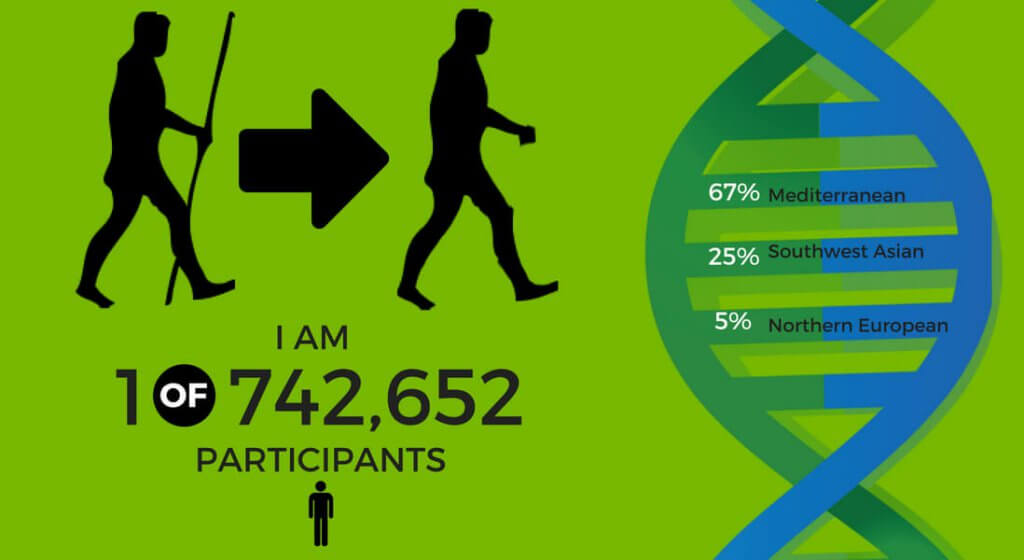
Cons of DNA Testing
- Small sample size: A common problem associated with DNA tests is that they rely on a small sample size. Many tests focus more on European heritage because many of the people who submit samples come from Europe. If you want specific results from smaller regions or countries, you may want to go with a smaller company.
- False results: False results are possible, especially when it comes to health tests. You may find that your results say you are not a carrier for a certain disease or that you do not have a predisposition to a specific condition when you actually do. That is why it’s important that you opt for the genetic screening offered by a professional.
- Limited results: You may find that the results you get are more limited than you expected. This can occur because the company only focuses on a small number of regions or because it lumps large groups and areas together.
- Cost: Some consumers find the cost of DNA tests a little off-putting. While you can get a basic DNA test for $100 or less, any services that you add will increase your total cost. We’ll look at the average prices for these kits below.
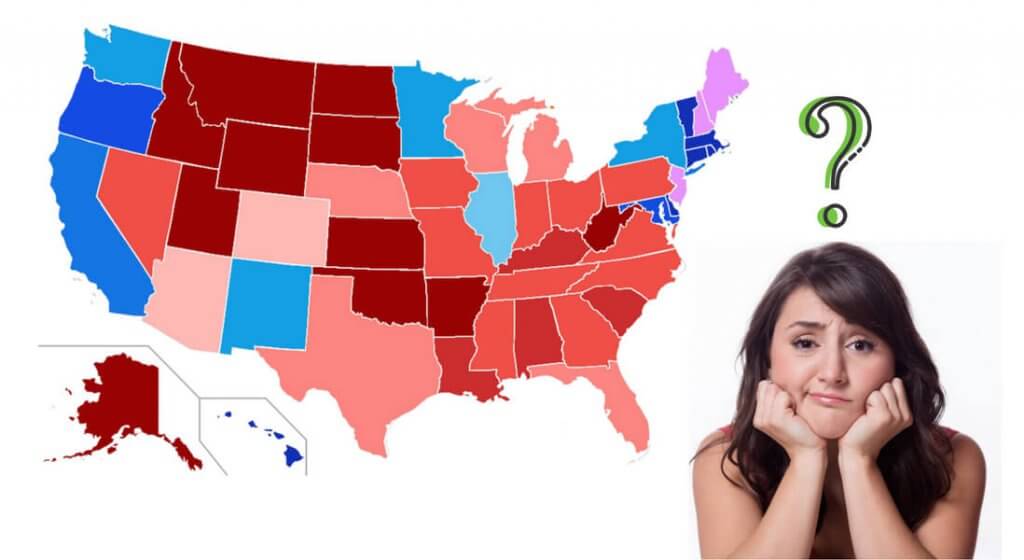
Did you know?
More than 50% of people in the United States alone aren’t sure of their genealogical backgrounds.
Types of DNA Tests
The popularity of home DNA testing kits led to a large number of people deciding to use one. Many people do not realize that these tests do not all look at the same things though. Some tests will only look at the mitochondrial DNA that relates to your mother, while other tests look only at your paternal DNA. Tests that focus on the Y-chromosome will only work on men. You’ll also find that many companies offer health DNA screening and tests but do not include this service in the basic package. We’ll go over the three common types of DNA tests and then help you figure out which one is best for you.
What is Autosomal DNA?
One thing you should consider as you look at these kits is the type of DNA that it tests. Many will perform an autosomal test, which looks at the chromosomes in the human body that do not relate to gender. The 23rd chromosome is the one that determines your gender. As these tests do not look at that chromosome, both men and women can use one and get solid results.
An autosomal DNA test essentially looks at small areas of your DNA to see the connections that you have to other people who also submitted samples. This not only shows that you have DNA in common but can also show how closely you and another person are connected. You get 50% of your genetic code from each parent, which means that 25% of your code comes from each of your parent’s parents. The results from one of these tests can help you find relatives you share genetic materials with from up to five generations in the past.
These tests are common among adopted people and those who have families who seldom talk. If your mother left home at an early age and no longer speaks to her parents, you can use one of these tests to find cousins and other relatives that you never knew you had. Your results may even find relatives who currently live on the opposite side of the country or in other parts of the world.
One benefit of autosomal testing is that it can estimate where your ancestors came from in the past. Many of the tests that we saw provide accurate ethnicity results among those who moved to a new area within the last 200 to 300 years, but some tests can go back even further. You’ll generally see information relating to the regions where you share DNA with others. Though some divide the world into just 20 to 30 regions, others divide the globe into more than 100 regions. The information that you get can help you determine where to look to find out more about your family tree and history.
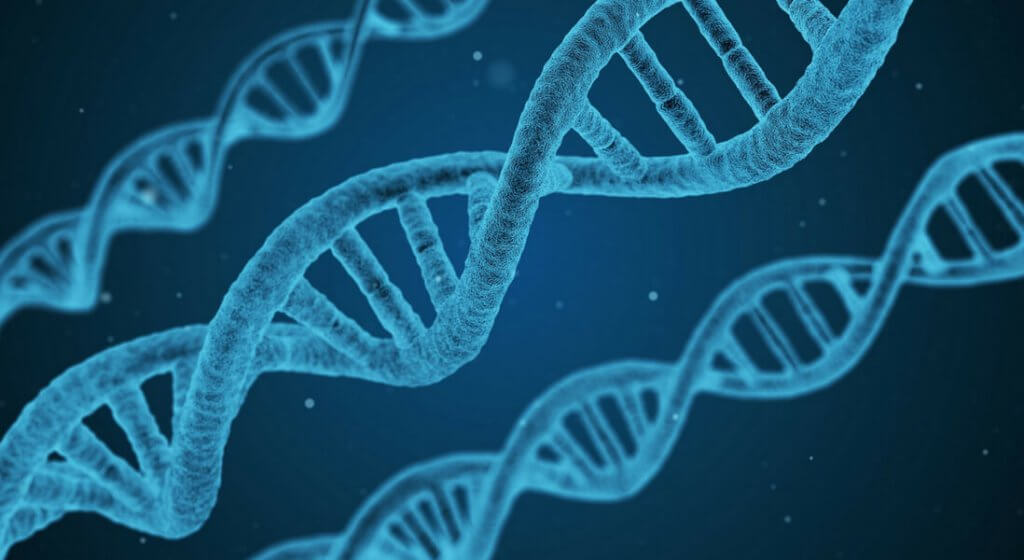
What is a Mitochondrial DNA Test?
Another type of DNA test that you can take is one that looks at your mitochondrial DNA. Also called mtDNA, this refers to the DNA that comes from your mom. Each time that a man and woman have a child, the genetic materials in that child changes. While you share some genes with your siblings, you have your own DNA markup. As mtDNA exclusively comes from the female, it does not change from one person to the next. All the women in your family will share some of the same markers.
This type of testing skips over the majority of the DNA located in your sample and instead targets just the mitochondrial DNA. A DNA sample contains more than three millions pairs of genetic markers, but when a test looks at the mitochondrial DNA, it looks at less than 17,000 pairs. The test will then compare your results to the samples already in its database.
When you choose a mtDNA test, you’ll find results and information relating to your mother and any other females in past generations. Depending on how far back the test goes, it may actually trace your family line back to one specific person or a small group of people. This helps you see where your mother’s family came from and any relatives from that line who still exist today.
The downside to a mtDNA test is that the results tend to show you people you share little in common with rather than closely related people. If you want to find siblings or aunts and uncles, you’ll want a more detailed test.
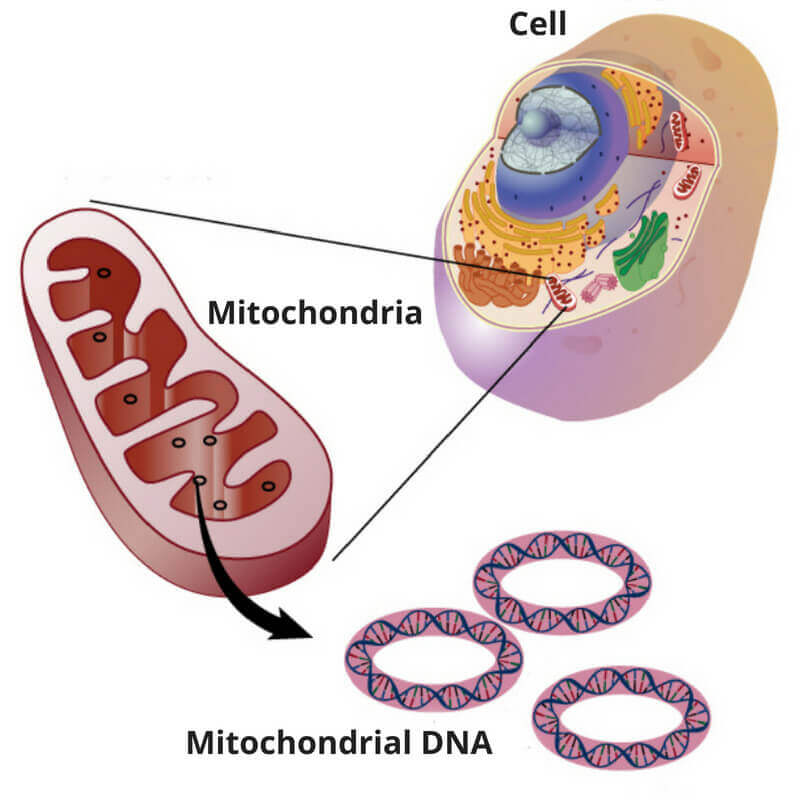
What is a Y-DNA Test?
Many of the top home testing kits also perform a Y-DNA test. This is similar to the mtDNA test but instead looks at only the genetic materials provided by the male line in your family. Men have both an X chromosome and a Y chromosome in their 23rd pair, while women have a double X chromosome in this pair. When you take one of these tests, you’ll learn more about your paternal line. It narrows down the markers in your sample to around 30,000 and tests those markers.
In the same way that the mtDNA test reveals more about your mother’s common ancestors, the Y-DNA test can reveal where your father’s family came from and tell you more about people who share those same common ancestors. It can also tell you whether those men came from one specific region or a small group of regions around the world.
One benefit to taking a Y-DNA test is that it can help you locate relatives you never spoke to before and those you never knew existed. It may help you find people far removed from your current familial line though. Some of these tests can help you find out more about your family’s ethnicity and religious beliefs too. Many religious groups lived in the same areas for generations.
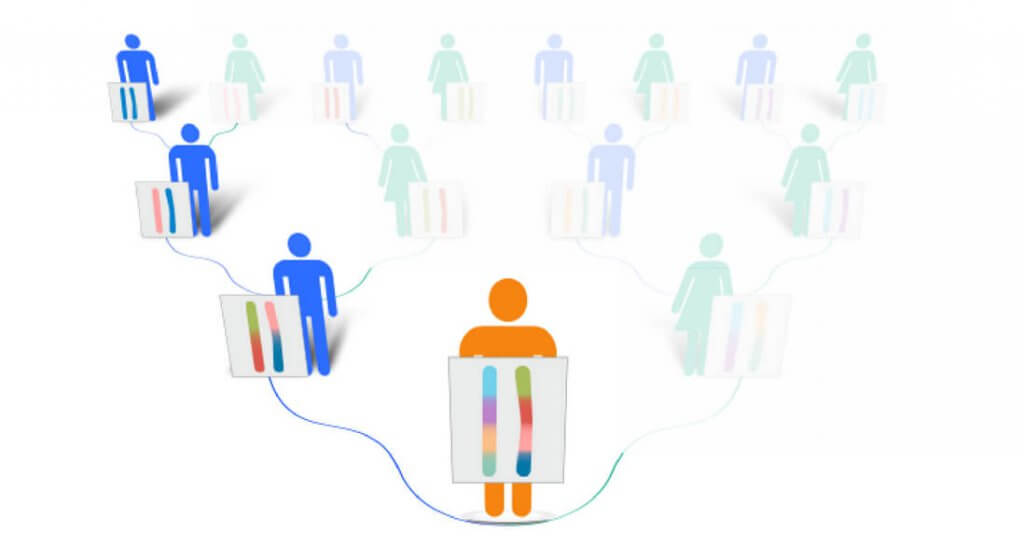
Why Choose One Type of Test Over Another?
While some of the kits on our list will perform more than one type of test, you may still want to know which type of test is best for you. FamilyTree DNA, for example, does both a Y-DNA and a mtDNA test while also checking your autosomal DNA. Other kits focus on autosomal DNA but can reveal information relating to your mother’s and father’s line. The best kit and type of test for you might depend on something as simple as the information you want to find. We’ll go over what each type of test will provide you with to help you make a decision.
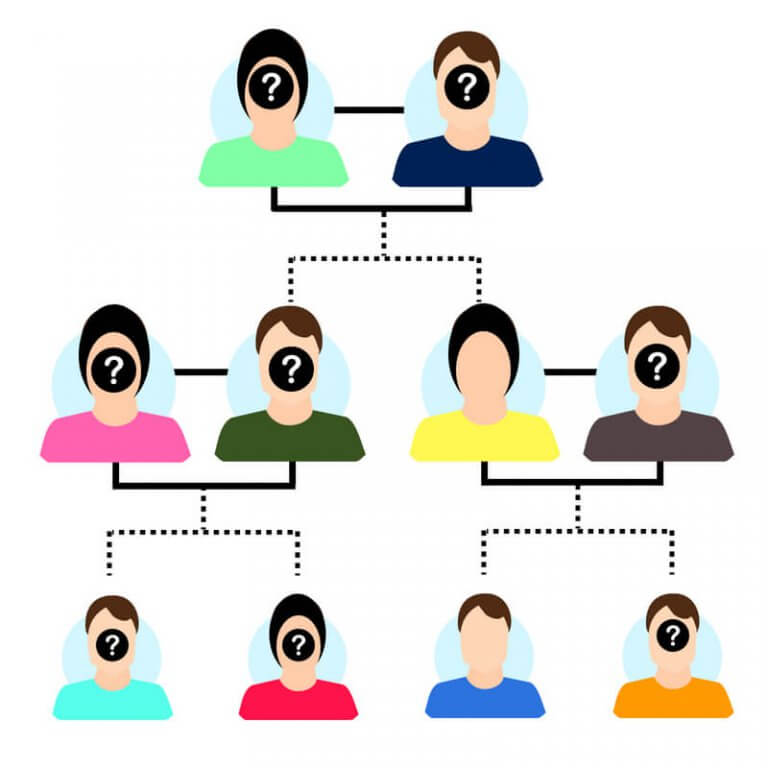
Did you know?
Around 90% of Americans believe that finding out more about their genetic and health histories can help them manage their health.
Autosomal DNA
The number one reason why most kits offer autosomal DNA testing is that it’s the best one around. Not only does this test find any living members of your family, but it will also provide you with information on any ancestors that you share in common with other people around the world. You can find out the exact percentage of each ethnicity type that you are and even see where those groups lived in the past.
If you want specific information though and want to trace your family as far back as possible, this might not be the best test for you. It gives you solid and accurate details about your parents and grandparents as well as your grandparents’ parents. When you want to go back six generations or more though, you won’t find much information. The results that you get can provide you with a good starting point in tracing your family line though.
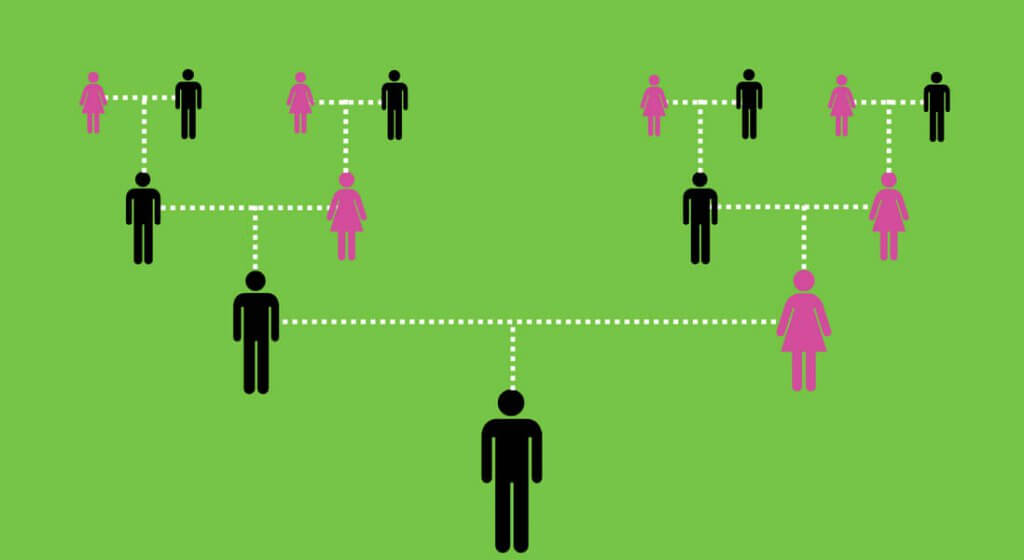
mtDNA
If your mother doesn’t know much about where she came from or doesn’t like to talk about her past, taking a mtDNA test can give you all the information that you need about her family. This type of test is also a good choice for adopted children and kids whose mothers died when they were young. Not only can you see any living people related to you on your mother’s line, but you can find her genetic history dating back thousands of years. 23andMe is just one of the companies that will test your mitochondrial DNA when you submit a sample.

Y-DNA
For many centuries, women took their husbands’ names when they married. This means that tracing your father’s line can help you see exactly where his family came from and exactly who you are related to today. A good example is someone who has a common name such as Johnson. If you started working on your family tree today, you would find millions of men and women with that same name located in cities all around the world. This type of test helps you narrow down that line to one area and to the people who share your DNA. As only men have the Y chromosome, only men can take this test.

Ethnicity Information
One of the main reasons why people do home DNA kits today is because they want to know where they came from, especially if they aren’t sure about their family history. If you had ancestors who immigrated to the United States from other countries, you may find that they changed their last names or lied about their backgrounds on Ellis Island. They may have felt ashamed or just embarrassed about their reasons for immigrating. The only way for you to find the information that you need is with a DNA test.
You should keep in mind that the information available to you will vary from one type of test to the next as well as the kit that you use. Those that test just your mother’s or father’s line will only tell you where the men or the women in that line came from over the years. Autosomal tests can give you more information relating to both sides but may not be as accurate as you would like.
Every company that offers these tests will give you geographical information relating to where it found other people with your same or similar genes. AncestryDNA is a popular option because the company divides the world into more than 350 regions. This includes larger regions like Africa and areas that it breaks into smaller regions. Living DNA is the top choice for those who came from Britain. Not only does it provide results for more than 80 regions, but it actually breaks down Britain into a number of smaller regions. This can help you find family members and long-lost relatives who still live there today.
Though you may want to go with the company that offers the most geographical regions, you should keep in mind that many offer similar results. When comparing a company that offers 24 regions to one that offers more than 100, take a look at the maps provided to see if there is any overlap. You’ll often find that one company divides an area into multiple regions while another company uses that large area as just one region. The number of regions available can change from year to year as more information becomes available too.
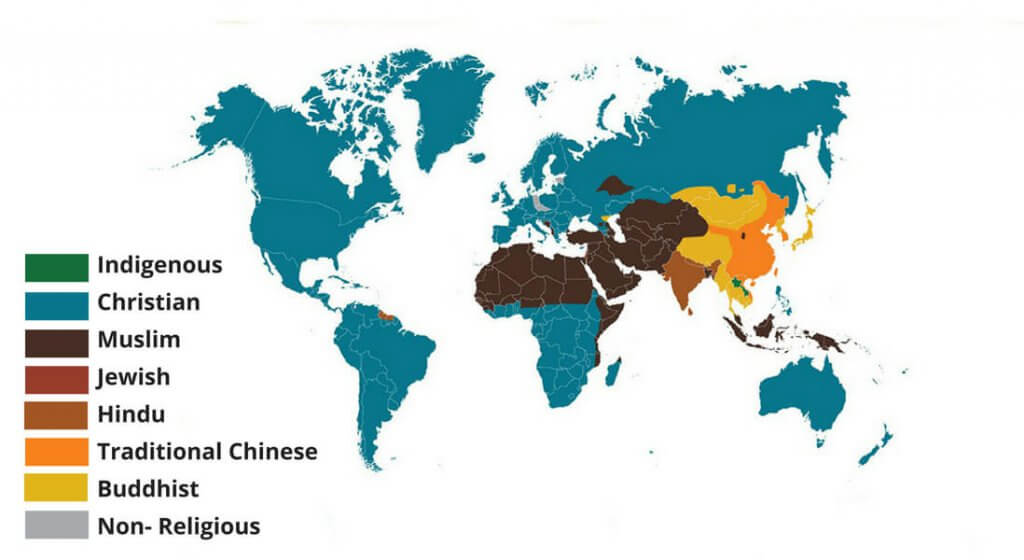
DNA tests provide you with results from around the world. Though some focus primarily on European countries, you’ll also get information on ethnic groups who lived in Asia and on other continents.
Regions, Not Countries
When you hear people talk about their ancestry, you’ll often hear them claim that they are British or French. They think about ancestry in terms of countries, which is potentially dangerous because countries changed so much over the years. You can look at the United States as a good example. When originally settled, most people lived along the East Coast. The country then established the 13 original colonies and later added more states across the country. If DNA tests existed in the 18th century, the results might show some people from the United States and others from individual territories. Other countries only came about in modern years and previously existed as part of other nations.
DNA testing companies will not tell you whether your DNA relates to a specific country, but those kits will reveal which regions you have connections to today. Instead of stating outright that your family came from Poland, the results might show that you have Eastern European ancestry. You can also track your DNA to regions in Africa and other parts of the world.

Jewish DNA Tests
If you think that you have Jewish ancestry, you can now take a test that specifically looks for DNA markers relating to this religious and ethnic group. Most tests look for markers found in four different groups, including Cohen and Ashkenazi. Ashkenazi refers to the Jewish populations found in parts of Eastern and Western Europe.
Native American Ancestry
A common misconception that some people have is that they think their families were Native American. Many people even claim that they had Cherokee princesses in their family lines, despite the fact that the Cherokees did not have princesses. Some of those who took these tests were surprised when they discovered that their families were actually African American instead of Native American. Depending on the test that you take, you may find out if there were any Native Americans in your family though.
If you need to know more about Native American ancestry, you should choose a kit that does an autosomal DNA test. This will tell you what ethnicity you are and what percentage of each type the test found in your genetic code. As long as you had Native American DNA in your family within the last four or five generations, this test will find that DNA in your sample. Both mtDNA and Y-DNA tests can find trace amounts of Native American DNA even further back in your family line. Though these tests cannot give you the detailed proof that you need to apply for tribal benefits, the results will give you information that you can use to find that proof. Many tests will also tell you whether you came from parts of South America or North America.
WARNING
You cannot use the results of a home DNA test to receive any type of Native American benefits, including both the tribal benefits mentioned above and any scholarships or grants for Native American college students.
Saliva Tests
Home DNA testing kits require either a cheek swab or a saliva sample. With saliva tests, you get a small plastic container inside the kit. You’ll provide a sample first thing in the morning. Once you take the container out of the packaging, you will need to remove the lid from the top. This usually twists off in the same way that the cap on a juice or soda bottle does. You may want to spit into your sink or a glass first. If you smoke or ate/drank anything before going to bed the night before, you should clear your throat of any phlegm first.
You can then wait a few seconds until you feel saliva building up in your mouth. After you have enough saliva for your sample, spit directly into the container. The saliva should appear clear and not brown or white. If you see any colored spots in the sample, you can actually rinse out the container and dry it before trying it again. The companies responsible for these tests require clean and pure samples. If you do not provide enough saliva, the company cannot get the genetic materials from that sample that it needs to perform the DNA test.
Before you submit your sample, you will add a stabilizer that comes in the package. You typically twist off the top of the vial and mix it with your sample. The addition of this liquid preserves your sample and keeps your saliva safe until it reaches the testing center.
What Not To Do Before a Saliva Test
- Brush your teeth
- Use mouthwash
- Smoke
- Eat
- Drink anything, including water
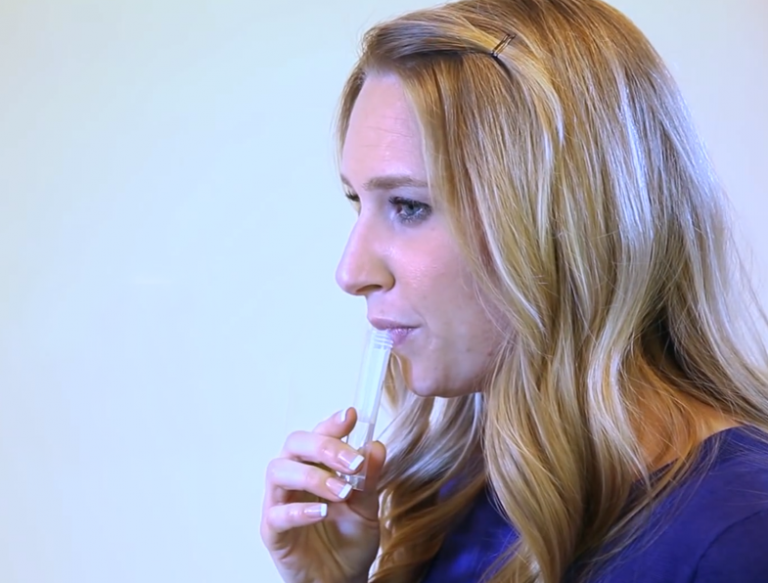
Cheek Swab Tests
In addition to a saliva sample, you can also take a test that asks for a cheek swab. These tests are similar to the professional DNA tests that can determine paternity. Most kits come with a cotton swab that looks similar to those you already have in your bathroom. It will come sealed in a small plastic wrapper that keeps it from picking up DNA when others touch the kit or packaged the kit. You will remove one end of the wrapper and slowly slide the swab out of the packaging.
Open your mouth slightly as you hold the swab in your dominant hand. Carefully place the cotton end of the stick inside your cheek and run it along the skin. You’ll then instantly place the swab in a protective wrapper before placing it inside the package that you ship back to the testing center. You may find it helpful to stand in front of a mirror when taking a sample. This helps you see where to place the swab and will keep you from poking yourself in the face. Some testing kits include a swab that has a slightly sharp edge rather than a piece of cotton.
Which is Better: Cheek Swab or Saliva Test?
After looking at the two different types of samples that you can provide, you might wonder if one is better than the other. The truth is that there really isn’t an advantage to using one over the other. As long as you can sit for a few seconds, you can use either type. Cheek swabs are usually best for a few different people, including:
- Children who are fidgety and have a hard time sitting in one spot
- Elderly people who have mobility issues that will keep them from spitting into a cup
- Those who have a difficult time producing saliva early in the morning
- Anyone who suffers from dry mouth
On the other hand, saliva tests are a good choice for certain people, including:
- Those who dislike things around their faces or in their mouths
- Anyone who has a sensitive gag reflex
- Older users who have sensitive gums or mouths
Both 23andMe and AncestryDNA require samples of your saliva to process their kits. FamilyTree DNA and the other companies on our list use cheek swabs.
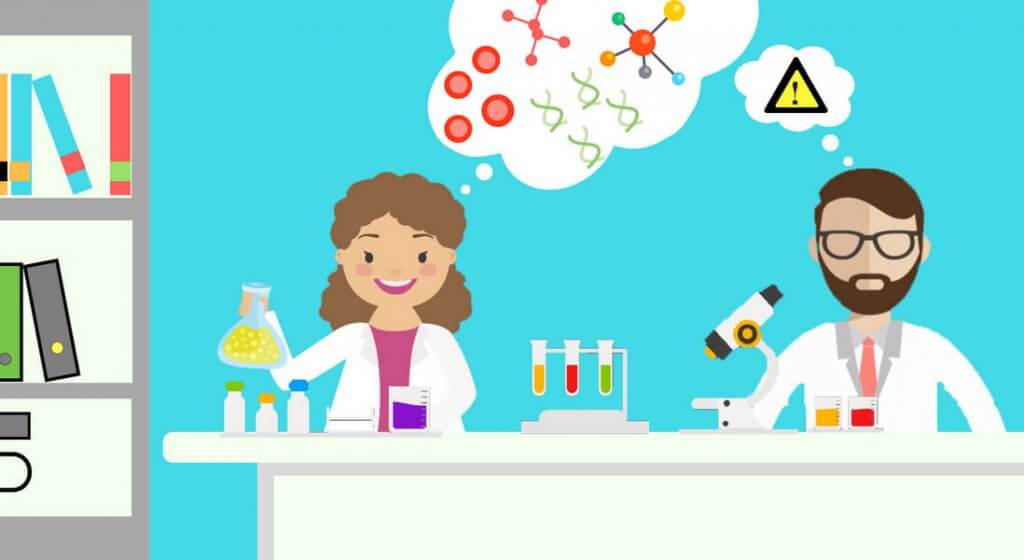
AncestryDNA comes from Ancestry.com, the leading genealogical research site on the web today. This is also one of the oldest home DNA testing kits available. Ancestry promises that it will keep all your information private and that no one will gain access to your results without your permission. Designed for those who want to learn more about their familial lines, the kit does an autosomal test and also tests your paternal and maternal DNA. It also gives you information relating to more than 350 geographical regions around the world.
We really like this test because it’s one of the only options for those who want to test for Native American ancestry. Though it cannot tell you if your family has a connection to one specific tribe, it can tell you if you have DNA related to tribes in North America, Mexico or Canada. When you get your kit, you can go online and create your account. You will then enter the code on your kit into the appropriate box on the site. This links your kit to your account and makes it easy for the site to update your information later.
Though it typically takes eight weeks for your results to come in, you may get your results back in as little as six weeks. Ancestry will send you an email to let you know when your results become available. You can then log in and view your results. One feature we like about this service is that it gives you the option to share your info with others. You can actually add an email address to your list and let the site mail your results to those addresses. This is a great option for those who give the kits as gifts and want to learn more about their loved ones.
If you still aren’t sure if this is the best kit for you, you should learn more about its community forums. When you have an account with the site, you can post on the message boards and find relatives and people who share common ancestors with you. Those forums are also a great way to connect with people you matched with through your kit without giving out your personal information.
Let’s say that your results show you shared a great-grandparent with two or more people who also use the site. Instead of handing over your contact information to people you don’t know, you can connect with them online and through the forum. Once you feel more comfortable, you can hand over your phone number or email address. Many people using the site found siblings and other loved ones.
One of the only things we don’t like about this DNA kit is that you really need an Ancestry membership to get access to all the site’s features. If you don’t have an account, you might dislike the limited things you can do with your results. Though subscriptions are available at different prices, you’ll need to pay at least $20 to become a member. We recommend using the free trial option when you get your results. If you find that you can’t do much with the site, you can cancel your subscription.
Pros:
- Lets you compare your results with more than six million other users
- Offers a large community filled with people who want to learn more about their families
- Allows you to create a unique family tree and add DNA information to that tree
- Gives you the option of connecting with other users anonymously
- Keeps records of your results forever
Cons:
- Some users had a difficult time distinguishing between tests because all info appears together
- You may not find as many connections as you expected because other users don’t share their results
- Must be a member with a regular subscription to use all features and to update your family tree
- Stops you from sharing raw data with apps and other sites
- Forums feature some cliques and users who don’t want to chat with new members
Our second choice for the best DNA kit for 2018 is the one available from FamilyTree DNA. Dateline NBC ran a story on this kit in June of 2018 and called it one of the best home kits available. One thing we really like about this company is that it offers a free surname search that you can try out before you become a customer. When you enter your name into the search box, the site will tell you the number of matches it found in its system. It also provides you with information about any genealogical projects that relate to your last name.
Another nice feature is that FamilyTree DNA lets you choose the type of DNA testing that you want completed. You can select the basic Family Finder option, which is suitable for both men or women, or you can choose one of the larger packages. All customers have the option of adding more services onto the base package too. This gives you the chance to track your mother’s line or your father’s line and view just genealogical information or both genealogical and historical data. If you had an ongoing project with National Geographic, you can even import that data to this site and use it with your results.
Those just starting out with genealogical research and those who need some extra help like using this site because of its large community. The forums feature thousands of users who can give you the information that you need to trace or create your family tree. You also have the option of creating a new project or joining an existing project. Those projects can help you find family members you never knew existed.
Pros:
- Gives you the freedom to pick and pay for only the DNA tests that you want
- Allows you to transfer raw data from the site to any other site or app
- Its large forum features thousands of posts and hundreds of users who post daily
- Works with National Geographic projects
- Users can join projects and start genealogical projects of their own
Cons:
- Only stores your data for a maximum of 25 years
- Is much smaller than other sites in terms of users
- Buying all tests is quite expensive
- Does not give you as many possible matches as others do
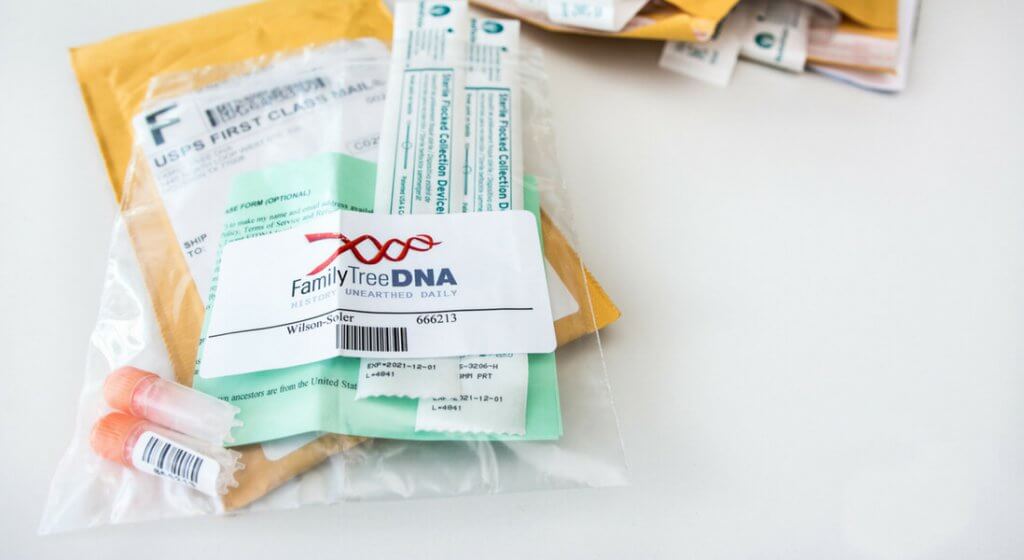
One of the most affordable ways to test your DNA from home is with the kit provided by MyHeritage DNA. You might know this name already because the site competes directly with Ancestry and ranks as one of the top sites for genealogical research. More than 96 million people from around the world used the site over the last five years, which means that it has a large database full of active users. Other sites tell you how many registered users there are but not how many actually use the site. A large number of active users gives you more people to talk to and to turn to when you need help.
The DNA test available from this company takes just two minutes to complete. You’ll take a simple swab from your cheek and put the sample in the included envelope before putting it in the mail. It takes around four weeks for the company to process your sample and send you the results. Some users found that they received their results even faster.
One nice feature of this kit is that you can pay for the test in advance. When you order from the official site, you can pay with your credit or debit card and avoid any hidden or unexpected surprise charges in the future. The company will extract all necessary data from your sample and run the material through its testing facility before sending you the results. You’ll find out what connections you have to different ethnic groups and regions around the world.
With the account that you have with the site, you can start your own family tree and include all the information that you know, including names and dates of births and deaths. After you get your results, you can import that data to your tree and automatically update the names on each branch. MyHeritage DNA then lets you search through its records to find more information and to use its forums to find relatives.
Pros:
- Gives you access to some free services
- Allows you to create a customized family tree and update the branches with new names
- Provides you with a database of users from North America and other parts of the world
- Can connect with other users online
Cons:
- Doesn’t have as many users as Ancestry and other genealogical research sites
- Database of genetic material features less than two million people
- Gives you limited genetic information when compared to other sites
- Does not offer health information
23andMe made a name for itself when it added health testing to its kits. This is one of the only companies that can offer this service with approval from the United States Food and Drug Administration (FDA). The FDA previously banned companies from offering this type of testing through the mail because of issues with the tests as well as with the security of shipping those tests. 23andMe offers customers the option of getting just DNA testing done or paying for both DNA and health testing at the same time.
When you sign up for the basic testing package, you receive five ancestry reports that give you a familial DNA report and reports on your maternal and paternal DNA. You also get a composition report that breaks your DNA down into European, East Asian and Native American, Sub-Saharan African and Western Asia and North African regions. This report shows you the overall percentage of your DNA from each region and the percentage of your DNA that relates to one of the smaller regions within those areas. 23andMe now has data available on more than 150 regions.
While the basic package is affordable, we highly recommend that you pay extra for the full package. You get the same five ancestry reports, but you also get a variety of health reports. Those reports tell you if you have the genes related to early hair loss, breast and other types of cancer, lung diseases and dementia. You can see how likely you are at suffering from specific medical conditions based on your genes.
23andMe also gives you multiple traits and wellness reports. The wellness reports let you know if you are sensitive to caffeine and other ingredients, if you are lactose intolerant, if you move at night and disrupt your sleep and even if you are at risk of developing fatty deposits on your body. Many customers like the trait reports because each one lets them know if their genes make them more likely to develop certain traits. You’ll find out if your genes cause your nails to grow long, your hair to develop a thick texture and even what time you typically wake up. New reports also let you know if you are a carrier for certain diseases and conditions based on your genes.
Pros:
- Full packages come with trait, health and carrier reports
- Compares the results of your test to more than one million other users
- Makes it easy for you to compare your results to others
- Requires just a small amount of saliva
- Stores your results indefinitely
Cons:
- Doesn’t offer all the genealogical research help and information that you need
- Limits the ways in which you can reach out to potential matches
- Stops you from using raw data off the site
- Health testing includes some frivolous data such as how you sleep or whether you are prone to hair growth
- The full package is fairly expensive
If you think or know that your family comes from Great Britain, the Living DNA test is the best one for you. This is the only DNA testing kit on the market that specializes in identifying British and Irish ancestry. Like other kits, it consists of just a few steps. You’ll order your kit online and wait for it to come to your home before registering it online. Once you take and submit your sample, you’ll send the kit to the facility and wait at least 10 weeks to get a response.
We like that the results you get show your family as it looks today and as it looked throughout history. Your report will show you the exact percentage of each region of Great Britain found in your DNA right now. The current day map feature allows you to see the number of genes you have in common with people living in modern areas of that region today. Living DNA also gives you a thorough history map that shows you how people with similar DNA moved over the years. You can actually view how your family moved to new regions and territories since ancient times.
Many customers like that this system uses a mother line, which means that it traces their DNA to show them a map of where their ancestry groups started and how those groups moved. You can view a genetic overview of your body and a coverage map too. If you’re more concerned with your paternal family line, you’ll find that the service gives you all the same information based on the DNA you received from your father.
As of June 2018, Living DNA does not give you the chance to make matches with potential family members. The company plans on adding this service in the future and hopes it will go live before the end of the year. This option will let you automatically check for genetic matches based on your sample and connect with those who match you. The site promises that it will automatically update you when new users register and match with you also.
Pros:
- Perfect for those who are British, Scottish or Irish
- Provides info on your father’s and mother’s line
- Lets you track the way your DNA moved and changed throughout history
- Gives you geographical information on more than 100 regions around the world
- Stores your results forever
Cons:
- Is a little expensive when you get all tests done
- Does not yet let you connect to other users
- Doesn’t show you matches based on similar DNA profiles
- Offers limited information outside Great Britain
Working with National Geographic
In one of our reviews above, we talked about how some sites allow you to upload and transfer information from a National Geographic project. National Geographic, the same company that maintains a magazine and a television network of the same name, also has something called the Genographic Project. Designed to help historians and others with an interest in genealogy, this project is fairly unique. Unlike other services that simply give you some background information on your family, this system hopes to track migration patterns from around the world.
When you sign up for this project, you can submit your DNA sample and get the three top tests done for one low price. The reason these tests are so affordable is that National Geographic will add the information it discovers about you to its system. Others can access that information in the future. This is a smart choice for those who want to support the scientific community.
Like other tests though, this project does have a few downsides. Many of the tests provide limited results when compared to what you would get from other sites. You’ll also find that you cannot share your information with loved ones and that you cannot use your results to connect with potential family members. This is really the best test for those who want basic information that they can use before doing genealogical research.
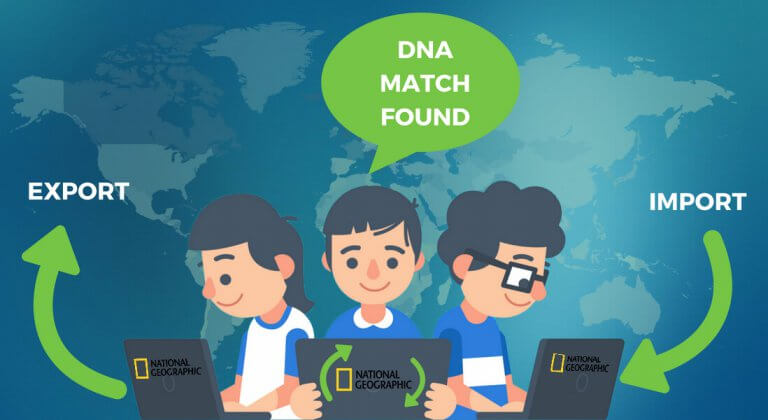
Expert Tip
One of the top benefits of working with National Geographic is that you can export your data to other sites and import data from other tests that you took.
Tests for All Types
We think that there are DNA tests out there suitable for all types of users. AncestryDNA took our top spot for a few reasons. We like that it connects you with so many different users and that it lets you chat and connect with others anonymously. Though we don’t like that it limits what you can do based on whether you become a subscriber, we like that you get a free trial to try out those services before becoming a member. We recommend some of the other home testing kits for other types of users.
- FamilyTree DNA: We recommend FamilyTree DNA for those who want detailed genetic information and those who want to connect with relatives online. Though its forums aren’t quite as big as the ones found on Ancestry, you can use those forums without paying extra.
- MyHeritage DNA: If you want a convenient way to keep track of loved ones and to design a family tree, you’ll want to use MyHeritage DNA. Not only does it let you design and build a family tree from scratch, but the site also lets you add more names based on your DNA test results and as new matches join the site.
- 23andMe: The top choice for those who want to learn more about their health and wellness is 23andMe. Though it functions like a standard DNA test, it offers a health screening package that you can add. These tests let you know if you are a carrier for certain diseases and whether you are at risk of developing medical problems later.
- Living DNA: Anyone who thinks their family came from the British Isles will want to invest in a Living DNA test. It provides detailed geographic information about smaller and larger regions in Great Britain and select regions around the world.
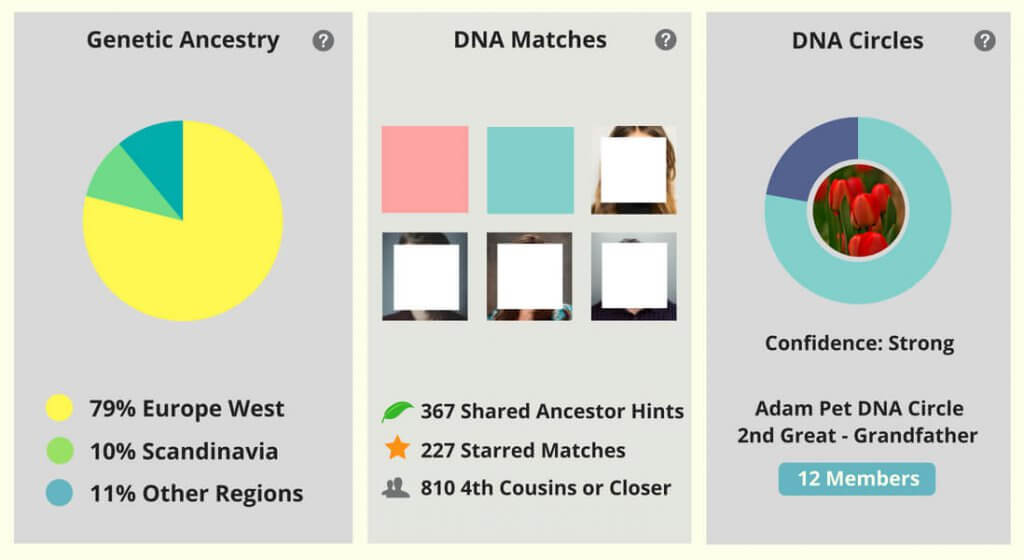
Steps to Take When You Find a Match
- Before you send a single message, check out your own profile to see how much information you shared. You may want to remove some of your personal info that matches can see.
- Craft a message that explains why you matched with that individual. You may want to explain what information you hope to get or how you think you are related.
- Give the other person time to respond to your message. You should keep in mind that some people may use the site less than others and that some users who took a DNA test do not want to talk to others.
Buying Guide – How to Choose the Best DNA Test for You
We hope that you find out shopping guide helpful and that you learn more about DNA tests and what they can reveal about your background and the background of your family. Though Ancestry is our top choice, we think that the four other tests that made our list are great choices too. You can place an order online and get your test kit in around a week. Once you send in your sample, your results should arrive within 12 weeks or less. Before buying any of these kits though, make sure that you know what features make one test the right one for you.
Privacy Protection
It’s important that you look at the privacy protection offered by the testing company before you hand over a sample. Though some companies use their own testing centers, others send samples to a separate facility for testing. You’ll want to look at the privacy settings of the company and that center. It’s helpful to look at how long the company stores your sample and whether you have the option of changing your privacy settings. If the company stores samples for 20 to 25 years, you can rest assured that it will safely dispose of your sample later.
Companies that let you change your privacy settings give you the option of blocking the site from matching your sample to new samples. You may want to find out if you can completely delete your account and remove all your genetic information from the site too.
Family Tree Options
Do you wish there was an easy and convenient way to keep track of your family tree? When you choose the right DNA testing company, you’ll have the chance to create your own tree and decide who to add to that tree and where to put those names. MyHeritage is just one of the companies that offer this option. When you uncover new matches in the database, the site gives you the option of adding those names and their information to your tree or just saving them for later. You can also save copies of your tree and share that tree on other sites. Though many of these sites charge for these services, most cost less than the software you can use on your computer does.
Import and Export Options
Even if you think that you’ll use the same ancestry site for years, you may want to look at whether it allows you to export and import data. Ancestry.com is the main site in the genealogical research community today, but this site purchased and acquired a number of smaller sites over the years. When the site that you use becomes part of a larger site, you might lose some of your information or find that you cannot access all the things you did before. When genealogical and DNA sites allow you to import and export data, you can transfer information across multiple sites.
Database Size
The size of the database that the testing company uses is important for a few different reasons. This tells you how many people the company can compare your DNA to and the number of possible matches and results that you might get. Take for example a site that has a database with more than one million users. The site will compare your data to all those users and find anyone who has a possible familial match with you. If you pick a site with a smaller number of users, the chances are smaller that you’ll find any matches.
Cost
Many people find themselves surprised at just how much DNA testing costs. AncestryDNA charges $100 for the basic test, though you’ll find sales that drop this price down to $70 or less. If you want to get health testing done at the same time, you’ll pay more than $100 to add that service to your package. This is still cheaper than some of the more professional testing centers that can charge $800 to $1,000 or more for the same tests. Other sites charge extra for services too. A good example is FamilyTree DNA, which charges one price for basic DNA testing and a larger amount for extensive analysis of your DNA.
Region and Country Support
One thing that many people do not think about when buying a home DNA kit is where that test is available. You should look for companies that specialize in selling tests in the country or region where you live. The company should also offer those kits for sales in other parts of the world though. When the tests are available in more areas, the company can grow its database to include people with genetic backgrounds that are similar to yours but slightly different because of where they live. This can help you see how your family line split off over the years as one side moved away from their home countries.
Customer Support
We highly recommend that you look at the customer support available. You can do this on your own with a simple email that you send to the customer support address. This lets you see how quickly the company responds. You’ll also want to read reviews from former customers to see what happened when the company couldn’t process their tests or when they experienced other problems. It’s also helpful to look for a phone number for the corporate headquarters too. You can call the company to ask about its kits and how it processes samples. This also lets you see how quickly the company answers calls.

DNA Health Testing vs. Genetic Screening
DNA health testing is an affordable way to test your genes. The results show whether you have a predisposition for certain conditions and can give you an idea of what to talk to your doctor about and when to speak to a medical professional. Genetic screening is more expensive but is often more accurate. If you are concerned with the results of your health testing, you should opt for genetic screening.
Benefits of DNA Testing for Adopted Children
Many adoptions today are open adoptions, which means that the biological parents stay connected to the children and the families who adopted those kids. Closed adoptions were once very popular and are still quite popular today. In a closed adoption, the child does not know his or her parents and does not get any information about the biological family. Whether you have a parent who was adopted or you are an adopted child yourself, you can take a DNA test to find out more about your biological parents.
As you check out your database matches, you may find that one or both of your biological parents took the same test and posted their results publicly. You may also discover that those two individuals had other children later or that they had kids with other people and that those children took the test. Even if you do not find siblings or parents, the test may help you find cousins on one side or the other. You can use those matches to narrow down who your parents were and find out more information on your own.

Expert Tip
If you are an adopted child and plan on taking one of these tests, make sure that you tell your adopted family first. You should explain that you want to know more about your biological background but that you still love them.
How to Keep Your Info Private
A common concern that many people have when using an ancestry website relates to how they can keep their information private. The reports that you get can show you that your family immigrated to the United States from Africa or another region decades ago, but you may also find out that Alzheimer’s or another serious disease runs in your family. Even if you want to share those reports with your loved ones, you may not want others to know what you found. You can delete your entire account with the site as soon as you get the results. If you decide to delete your account though, make sure that you move your reports and results of the site first. Many companies do not give you the option of viewing your information later.
You will also want to use caution when it comes to sharing your raw data with different apps. We’ll look at some of the apps that you can use in a section below. You will want to check the security of the app to ensure that the developers keep your info safe and that there are multiple layers of security protection.
WARNING
You should always read the fine print before submitting a sample to an ancestry testing company. Some companies actually add a clause that gives it the right to use your DNA sample in any way that it wants.
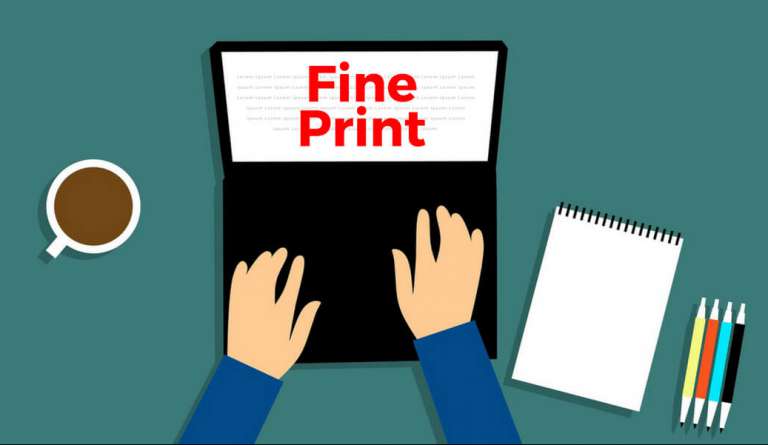
How to Trace Your Family Tree
In addition to the info that you get from an ancestry test, you can use the following resources to trace your family tree and add to each branch.
- Public records: If you know where your family lived in the past, you can access the public records for those areas. Many cities and counties offer free marriage and death records as well as birth and divorce records.
- Census records: Though some census records are available online, you may need to take a trip to the region where your family came from to access those records. Census documents tell you the names and ages of each person living at a specific address.
- Military records: The best way to find information about family members who served in the military is through military records. You can often submit an information request based on an individual’s name and date of birth or social security number.
- Newspapers: Don’t forget about newspapers, especially digitized papers that are available online. You can often search for specific keywords such as a person’s name and view all the articles that mention that name. Many newspapers allow you to submit information requests too.
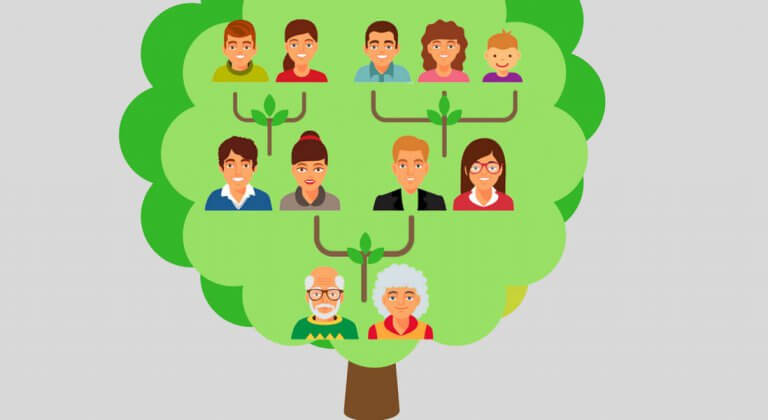
Other Family Tree Resources
Church records
Cemetery records
Your own family
City Directories
Court records
Prison records
Probate court records
How Much Do Ancestry Sites Cost?
In our review of the Ancestry testing kit, we talked about how you can become a subscriber and gain access to thousands of online records. Other similar sites such as MyHeritage also provide you with records access when you become a member and take a DNA test. The best way to find out if a site will give you the information that you need is with a free trial. You typically need to add a debit or credit card to your account. At the end of your free trial, the site will automatically charge your card for the cost of membership.
You may have the option of paying a fee each month or paying for a full year of service at the beginning of the year. Ancestry offers a six-month plan for around $100, but the site also lets you pay for a single month of service for less than $20. Other sites charge a monthly fee of $10 to $20 and offer a yearly plan for $200 or less. When you opt for a one-month plan upfront, you can see whether the site will help you conduct research on your family line and connect with possible relatives.
Benefits of Using an Associated Ancestry Website
- You can form deep relationships and connections with other users, including those who help you on your search and those related to you.
- You can get help deciding where and how to search for your family.
- Some sites give you access to free public records searches and other free information, including census and immigration records.
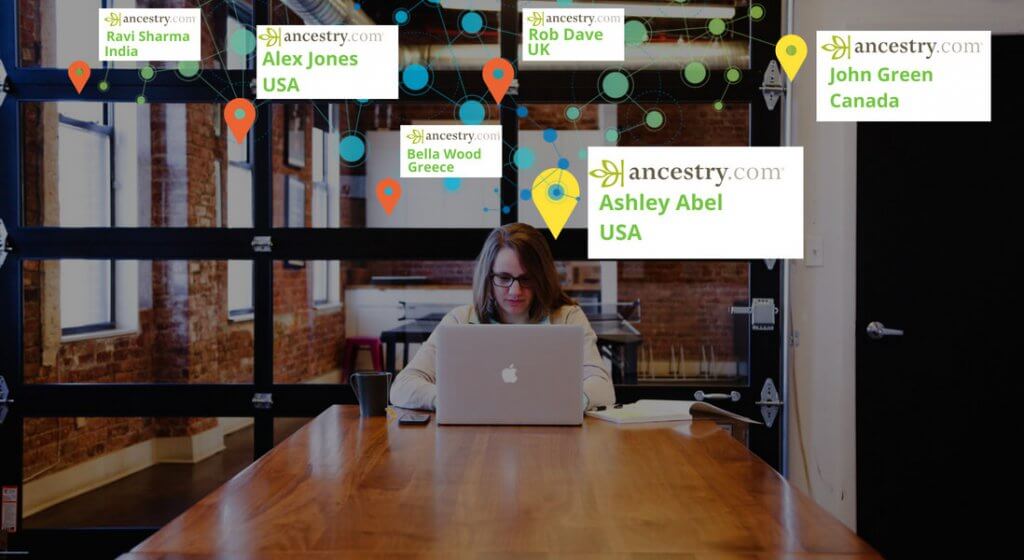
WARNING
Be aware that many sites will keep your card information on file and automatically renew your membership at the end of the year. If you want to avoid those charges, you’ll need to remove that card from your account or cancel your plan.
What to Do With Your Raw Data
After taking a DNA home test, the testing company will give you raw data relating to your results. Depending on the site that you use though, the results may appear slightly confusing. Many people have a difficult time deciding what each piece of info means and how it applies to their families. You can easily see your genetic background and ethnicity percentages, but you may not understand what you can do with that information. There are some great tools that help you analyze your data. Before using any of these services, you should make sure that the testing site you use allows users to export their raw data.
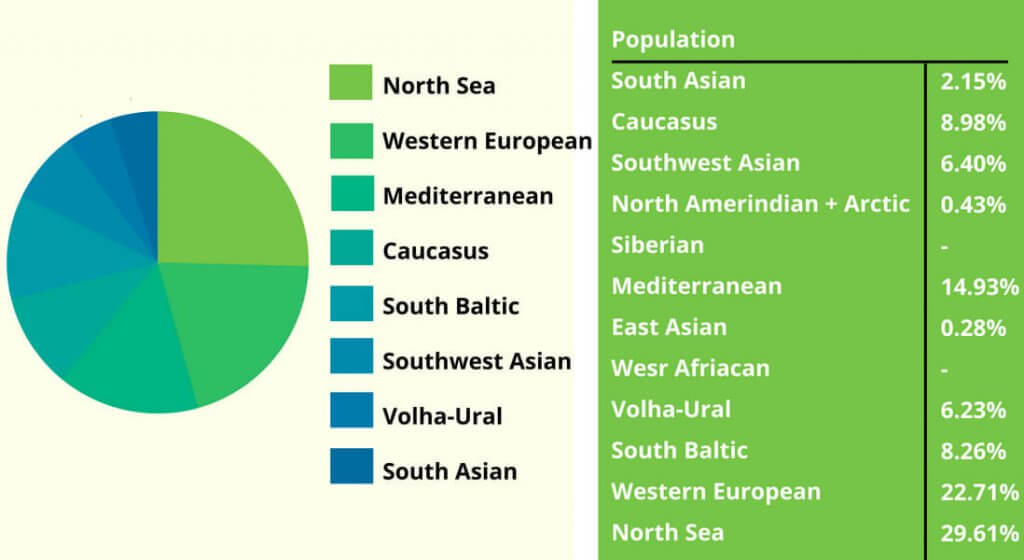
Promethease
Promethease is a site that works with 23andMe results. You can transfer your raw data over in just a few minutes and quickly check out how your data compares to others who used the site. It shows any conditions that you are susceptible to based on your results and provides links to articles you can read online. Those links help you see how your genes make you susceptible to cancer and other diseases. That information may help you feel a little calmer about your results because you find out that you have a small risk of developing those diseases. The site charges a low fee of just $5.
529andYou
Many people who use 23andMe and similar testing services wonder how they can actually track down relatives and find out more information about living family members outside of the ancestry site. 529AndYou is a great choice because it functions as an extension that you can download and use with Google Chrome. You’ll need to go into your 23andMe account and make changes to your advanced settings before using the extension. It compiles all the information in your account and all your matches and saves that data in a separate file. You can access that file on your computer without logging into your 23andMe account.
Livewello
If you take a DNA test primarily for health data, you’ll want to use Livewello. LiveWello works with many of the testing services that made our list and will use your raw data to give you detailed health reports. Those reports condense all your information down into an easy to read format that you can print off for your records and share with loved ones. The downside to this service is that it charges a $19.95 fee. Once you pay that fee though, you’ll get a permanent account with the site. Livewello provides you with an app that you can download to any device and free updates in the future.
GEDMatch.com
Though it might sound like the official site for the GED, this is actually a popular website that analyzes and compiles data from ancestry sites and testing services, including FamilyTree DNA, 23andMe and AncestryDNA. It puts your ethnic background into a handy pie chart that makes it easier to see your makeup. The site will then compare your results to others who used the same testing service and will give you a list of potential matches. You’ll also like that you can change your privacy settings and share as much or as little information as you want with those matches.
Other DNA Tests You Can Use at Home
- African Ancestry: This is the only DNA test kit that looks specifically for African American ancestry. It requires just a small sample and can identify the exact regions and parts of Africa where your family came from and where you still have relatives living today.
- Archives: Though initially a standalone genealogical research site, Archives is now part of Ancestry. It allows you to upload the results of your tests and access records not available through the other site.
- Orig3n: Orig3n is a unique DNA testing service that focuses more on your health than on your family. It lets you pick a basic test for just $99 or add more services to your package based on what you want to test. If you have multiple relatives who want to take the same tests, you can request a family discount.
- Full Genomes: With tests starting at around $800, Full Genomes is the most expensive DNA test. If you can afford the cost though, you may find the test worthwhile because it provides extensive and detailed reports on many different ethnic groups.
- HomeDNA: This service gets an average of three stars among customer reviews. While it’s more expensive than other services at around $200, it includes both DNA and health testing. This service also allows you to import data from other tests and export your results to other sites.
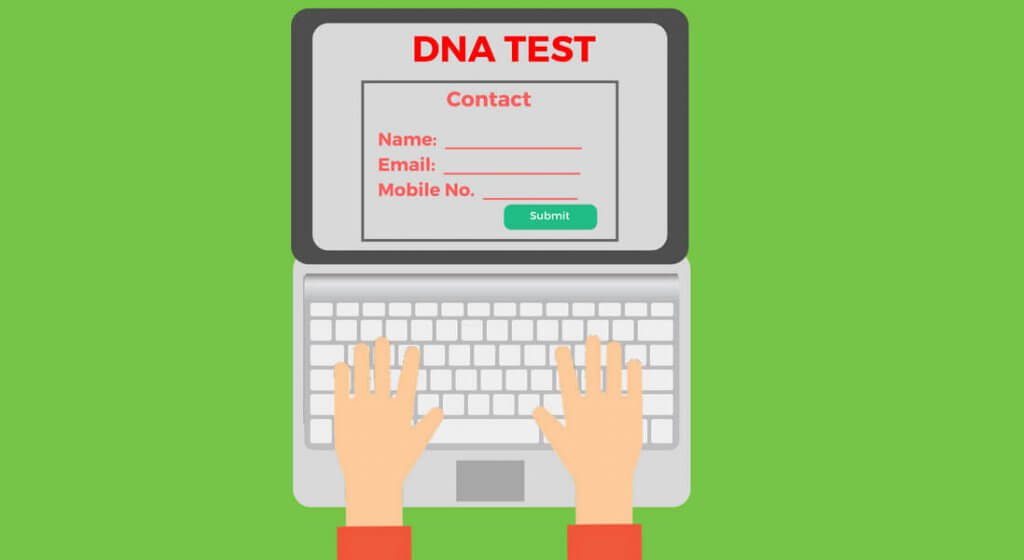
What to Do if the Company Cannot Process Your Sample
No matter how careful you are when taking your DNA samples, problems can arise during the shipping process. If the company sends you an email that states it cannot process your sample, you can do a few things.
- Contact the company online: When you send an email in response to that message, make sure that you explain you still want to take the test. Ancestry had some problems with its tests in the past and usually gives its customers a replacement test for free. You may need to pay for the shipping of the new test though.
- Post about your experience online: If the company refuses to give you a replacement test or wants to charge you for the full cost of a new test, share your experience with that company online, especially on social media sites such as Facebook and Twitter. Many companies worry about their online reputations and will make things right with you rather than risk negative publicity.
Tips for Getting the Most Out of the DNA and Genealogical Community
- Create an introductory post: Creating a post is the first thing you should do in that community or forum. This lets you introduce yourself to other members and explain what you hope to get out of the message board. You can also include any background information that you want to share, including the names of your parents or your grandparents’ names.
- Look for matches: Once you get your results back, you can use those results to search for matches who use the same site. Those matches can include siblings you never knew you had, great-aunts and uncles who live in other countries and even fourth and fifth cousins.
- Send messages: When you send messages to your matches on the board, you give those users the chance to contact you and share the information they want you to know. They can also check out your profile and find out how you’re related before sending you a message.
- Post as much as possible: MyHeritage and similar DNA testing companies have message boards that help you research your family. The more that you post on the boards, the more info you can find. You should try to post at least a few times a week and respond to posts that you see about your family.
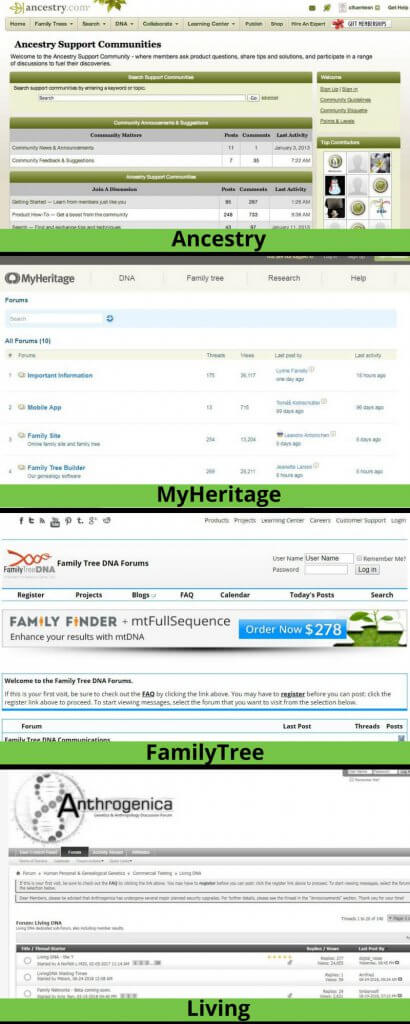
Tips for Gift Giving
We mentioned in a section above that many people give home DNA testing kits as gifts to their loved ones. If one of your parents was an adopted child, you can give that parent the gift of finding his or her relatives. We recommend that you follow a few tips before giving a kit as a gift though.
- Consider your audience: As much as you want to know about your background, a loved one might not feel the same way. Those who are secretive about their pasts may know more than they tell you. If you have a loved one who doesn’t like the idea of taking a DNA test, you can take one yourself.
- Give the kit: Far too many people try to make things easier on their loved ones and actually register the kits before giving them as gifts. When new information becomes available, it will come to you rather than to your loved one. If you want to register the kit for that individual, wait until after you give it. You can help your loved one register the kit and set up an online account as well as take a sample and send it to the company.
- Spring for extras: You should consider springing for a few extras when giving a DNA kit as a gift too. 23andMe is just one of the companies that now do health testing as well as genetic testing. Though this costs extra, it can help your loved one even more than a basic DNA test will.
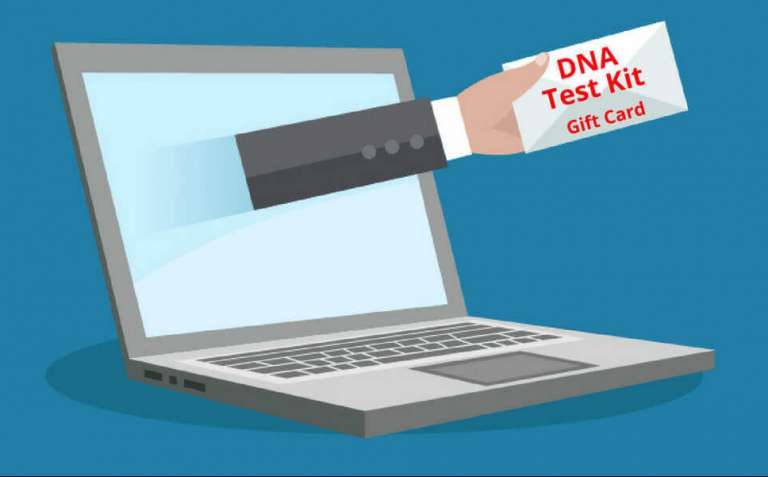
Expert Tip
If you want to give a DNA test as a gift but don’t have time to pick up the actual kit, you can buy a gift card instead. Some sites even offer digital gift cards that you can send via email to loved ones who live far away.
How Much Should You Pay for a DNA Test?
To take a traditional DNA test, you would spend a few hundred dollars or more. If you want to take a home test, you will spend much less. Most of the kits on our list retail for right around $100. The 23andMe kit retails for $99 but charges you around $30 extra to test your sample for genetic markers and other health information. Depending on where you live, you may need to pay sales tax on the kit too. Some companies also charge for shipping and will base the rate on the distance your home is from its shipping facility. Some drugstores and big box stores sell the kits on the shelves too. You can pick one up on your next shopping trip and drop your sample in the mail the next day.
Before you buy from a local store though, use the links on this page to visit the websites for each DNA test kit first. Many of these companies offer discounts for online shoppers that will drop the price down to $50 to $75. Even if you pay extra for shipping, you’ll spend less than you would to buy one from the store and ship the completed kit back to the testing center.
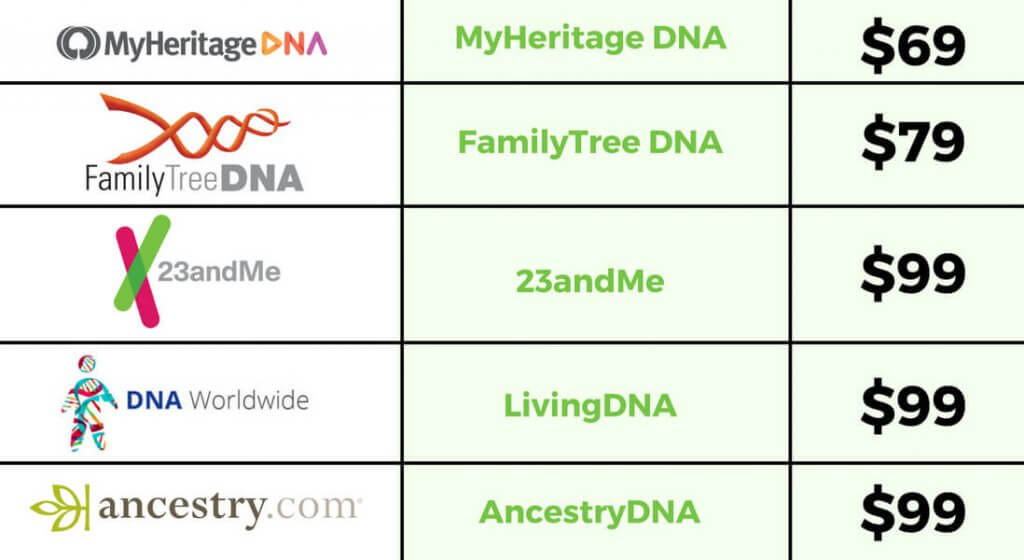
Frequently Asked Questions
A: When a couple has a child and the man claims that he is not the father, the court may order that the man take a DNA test to establish paternity before ordering him to pay child support. Home test kits such as the ones on our list will not help you prove paternity in a court of law. Paternity tests generally require a blood sample.
A: A dog DNA test is similar to a human DNA test. It comes in a small kit that lets you take a sample from your dog. The company that runs the test can give you info relating to your dog’s breed and whether it has any other types of breeds in its genes. These tests are great for those who adopted mutts.
A: AncestryDNA and similar tests require a small amount of saliva to run your sample. If you cannot get enough saliva to fill the test vial, place your hand at the base of your jaw where it meets your ears and softly rub your hands against your skin. This will trick your body into producing enough saliva to fill the container.
Related Reviews
We have access to thousands of products, and have meticulously and personally hand selected the very best for you to check out.
The team that worked on this review
reviews for best products.

Jenn
Editor &
Content Writer

Paul
Chief Designer &
Program Manager

Karen
Front-end
Developer

Diga
Business Analyst &
Admin Assistant
We are a participant in the Amazon Services LLC Associates Program, an affiliate advertising program designed to provide a means for us to earn fees by linking to Amazon.com and affiliated sites.

